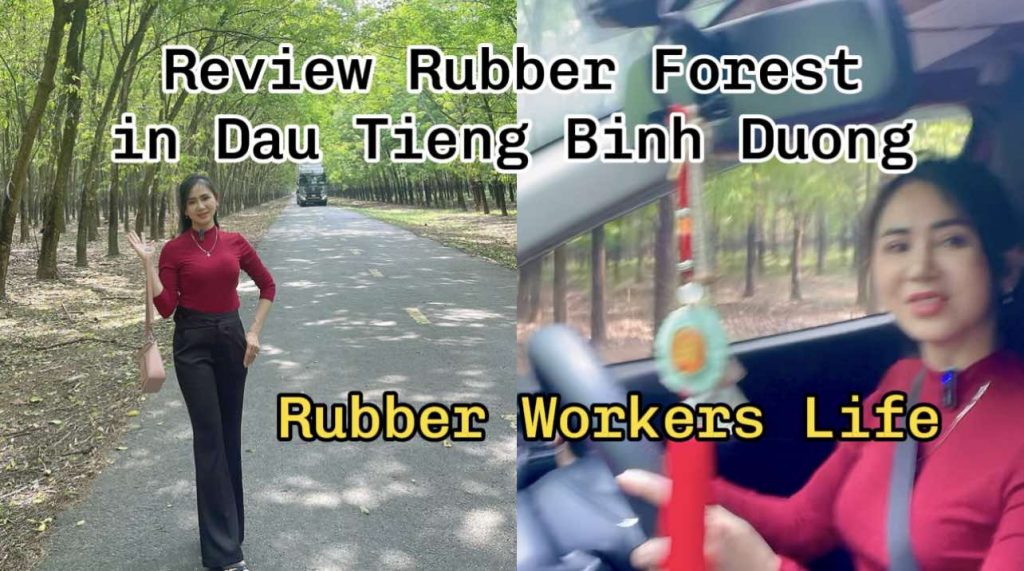Exploring Dau Tieng Rubber Forest, Binh Duong – The Life and Work of Rubber Tappers

Exploring D?u Ti?ng Rubber Forest, Bình D??ng – The Life and Work of Rubber Tappers
Exploring Dau Tieng Rubber Forest, Binh Duong – The Life and Work of Rubber Tappers
1. Introduction to Dau Tieng Rubber Forest
D?u Ti?ng Rubber Forest, located in Dau Tieng, Binh Duong provinc, Vietnam, is one of the country’s largest rubber plantations. It has played a crucial role in Vietnam’s rubber industry, providing raw materials for both domestic and international markets.
The plantation has a rich history, dating back to the colonial period when the French introduced rubber tree farming to Vietnam. After gaining independence, the Vietnamese government took over the plantations, and they became state-owned enterprises. The Dau Tieng Rubber Company remains one of the key players in the industry.
Besides being an economic powerhouse, this vast rubber forest is also home to thousands of rubber workers, who have spent decades tapping latex, making it their primary livelihood.
2. The Work of a Rubber Tapper – An Unusual but Essential Job
Rubber tapping is a skilled labor-intensive job that requires precision, patience, and endurance. Unlike other agricultural jobs, rubber tapping has a unique schedule and process.
2.1. A Rubber Tapper’s Daily Routine
- Work hours: Rubber tapping begins at 2-3 AM, when the temperature is cool. This allows latex to flow more freely without coagulating too quickly.
- The tapping process: Workers use a sharp knife to make precise incisions on the rubber tree’s bark to extract latex.
- Collecting the latex: Around 6-7 AM, workers return to gather the latex from small collection cups placed at the base of each tree. The latex is then transported to processing facilities.
2.2. The Technique Behind Rubber Tapping
- A successful rubber tapper must cut at the right angle and depth to allow the latex to flow while keeping the tree healthy.
- Over time, workers adjust the cutting areas to prevent damage to the tree and ensure long-term productivity.
3. The Income and Benefits of Rubber Workers
During the 1990s, working as a rubber tapper was considered a high-paying job in Vietnam. Compared to other industries, the salaries and benefits of rubber workers were significantly better.
- The average monthly salary for a rubber worker ranged from 3 to 4 million VND, while most other labor jobs only paid around 1.5 million VND per month.
- Rubber workers also received end-of-year bonuses (ABC money), which further boosted their annual income.
- The job was considered stable, and workers were often provided with state-sponsored housing in collective dormitories if they lived far from the plantations. Local workers, on the other hand, commuted from their own homes.
The combination of higher wages and government benefits made this profession highly desirable in the 90s.
4. The Challenges of Rubber Tapping
Despite the relatively good income, the job of a rubber worker is physically demanding and comes with several difficulties.
4.1. Working at Odd Hours
- Since tapping occurs in the early morning, workers have to wake up before 2 AM and work in the dark.
- The cold temperatures at night and physical fatigue can lead to long-term health issues.
4.2. The Repetitive and Labor-Intensive Nature of the Job
- Workers must walk several kilometers daily to tap hundreds of trees.
- The constant bending and slicing motions can cause muscle pain, back problems, and exhaustion over time.
4.3. Dependency on Seasonal Factors
- Rubber tapping is seasonal, as trees shed their leaves from February to April, making latex extraction impossible.
- Unfavorable weather conditions can affect latex yield, reducing workers’ earnings.
5. The Economic Importance of Dau Tieng Rubber Forest
The rubber industry plays a significant role in Vietnam’s economic development, and D?u Ti?ng Rubber Forest is a major contributor.
- Binh Duong is among the leading provinces in rubber production, generating high export revenues for Vietnam.
- The latex collected from Dau Tieng is used in various industries, including tire manufacturing, medical supplies, and industrial rubber products.
- The plantation provides thousands of jobs, from latex harvesting to rubber processing in factories.
Rubber is a vital export product, with Vietnam ranking among the top rubber exporters worldwide.
6. The Future of Rubber Tapping and Technological Advancements
With technological advancements, the rubber industry is gradually modernizing, changing the way latex is harvested.
- Automated rubber tapping machines have been introduced in some plantations, reducing manual labor.
- However, human workers are still essential, as machines cannot fully replicate the precision required for effective rubber tapping.
- The demand for natural rubber remains high, ensuring that rubber plantations, including D?u Ti?ng, will continue to thrive.
Despite changes in technology, the expertise of skilled rubber workers remains crucial to maintaining high-quality latex production.
7. Conclusion
Dau Tieng Rubber Forest in Bình D??ng is more than just a rubber plantation; it represents decades of hard work, perseverance, and economic growth.
For generations, rubber workers have dedicated their lives to this profession, enduring the challenges of working before dawn, performing repetitive labor, and facing seasonal limitations. Yet, for many, the stable income and government support made it a career worth pursuing.
As technology evolves, the rubber industry in Vietnam continues to modernize, but the legacy of traditional rubber tapping will always be an integral part of the country’s agricultural and economic landscape.
DauTiengRubberForest #BinhDuong #RubberWorkers #RubberTapping #VietnamRubberIndustry #LatexHarvesting #RubberTreeFarming #VietnamHistory




